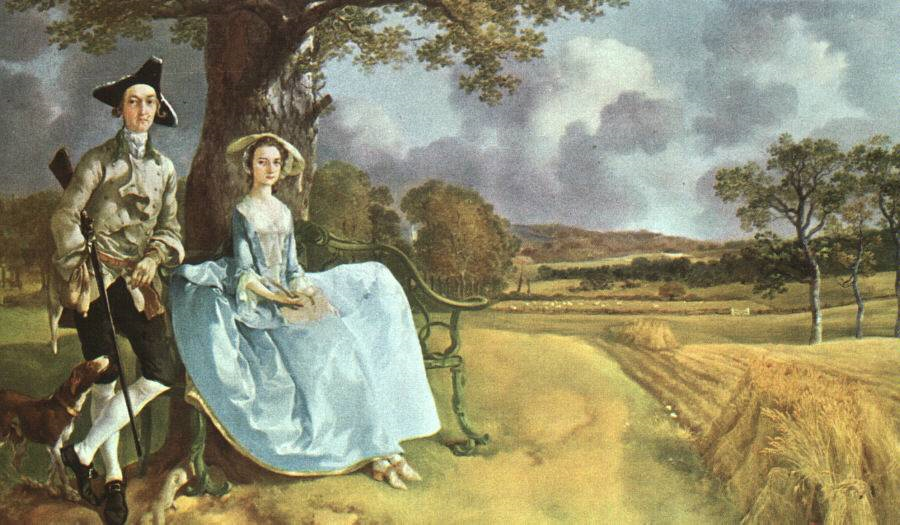
- •I ntroduction
- •1.1. The arts
- •1.2. What is art?
- •What is art?
- •1.3. Revision
- •2.1. Man and music
- •2.2. Understanding music
- •Understanding music
- •2.3. Describing music
- •2.4. Describing a music event
- •A Feast of Russian Arts
- •2.5. Mozart’s don giovanni opens in prague
- •Mozart’s don giovanni opens in prague
- •2.6. The story of jazz
- •The story of jazz
- •2.7. Revision
- •3.1. Describing a painting
- •3.2. British landscape painters
- •3.3. Landscape painting
- •Landscape painting
- •3.4. Impressions of light
- •3.5. Édouard manet
- •Édouard Manet – not just an impression
- •3.6. Modern art
- •Adapted from Wikipedia, the free encyclopedia
- •3.8. American pop art painters
- •3.9. Revision
- •4. Check yourself
- •Writing a formal letter
- •Ways of salutation
- •Ways of closing a formal letter
- •Reviewing songs and music
- •Writing a film review
- •Understanding the task
- •Word formation
- •Structuring a review
- •Intensifying adverbs
- •Words that go together
- •Link words
- •Planning
- •Writing
- •Checking
- •Reviewing a song
3.2. British landscape painters
Task 1. Discuss the following questions in pairs; then share you opinion with the whole class:
Do you think you can say that you enjoy looking at some piece of landscape painting?
What do you like or dislike about this branch of painting?
Would you choose a landscape piece to decorate your room? What would it be: an oil or water-colour painting or a photograph? Why?
What landscape painters are you familiar with, what are they famous for?
What British landscape painters and their works do you know?
You are going to watch a story of British painting by Sister Wendy Beckett, an art expert. Before you watch it, do Tasks 2-4.
Task 2. Here are some words and expressions that you’ll come across while watching the video. Match them with their definitions.
|
|
Task 3. Paraphrase the sentences. Then make up new sentences with the words in italics:
This week we visit the world of pastoral idyll.
Two dramatic explosions would have swept this world away.
The artist was far more interested in the beauty of horses than in the vanity of their human patrons.
The lost world of aristocratic ease is preserved in French painting and British.
These paintings immortalized a quintessential Englishness.
He got to paint a golden sweep of Suffolk.
The Industrial Revolution was romanticized in his art.
The Romantics celebrated elemental forces.
Task 4. Below are the three paintings Sister Wendy is going to talk about in the video. Describe them in as much a detailed way as you can. Share your impression of the paintings with your partner.
Thomas Gainsborough. Mr and Mrs Andrews. 1750. |
|
John Constable. The Hay Wagon (The Hay Wain). 1821. |
|
Joseph Mallord William Turner. The Fighting Temeraire. 1838. |
|
Now watch the video once and do Tasks 5 and 6.
Task 5. Watch the video and turn back to the questions in Task 4. Can you improve any of your answers?
Task 6. Are the following statements true or false? Correct false statements.
The French Revolution and the Industrial Revolution in Britain were the two dramatic explosions that changed the world. T / F
Country gentlemen of the 18th century needed photography to show off their property. T / F
Joshua Reynolds was a portrait painter. T / F
George Stabbs was particularly interested in immortalizing the images of his patrons. T / F
In his painting "Mr. and Mrs. Andrews" Gainsborough depicted an old married couple with the calm sea in the background. T / F
It was fashionable to be portrayed in the luxurious interiors of the mansions. T / F
Constable captured the idyllic world of the British countryside that was doomed. T / F
Turner glorified the new age of progress. T / F
Turner belonged to the movement of Impressionism. T / F
The Romantics celebrated the elemental forces of nature. T / F
Watch the video again and do Tasks 7 and 8.
Task 7. Study the vocabulary in the right column. Then watch the video taking notes. Use your notes and the vocabulary to answer the questions in the left column.
Part 1
|
The world of pastoral idyll, to show off, a bloodstock mare, to be the apple of one’s eye, vanity, patrons, to immortalize quintessential Englishness, the joy of countryside |
Part 2
|
Manipulator, to concentrate on portraits, the extent of the property, a golden sweep of Suffolk, a yobbo, to be naughty, uninteresting person, look shabby, greenhorn, to stare suspiciously, hardly talk to one another, marriage made in heaven. |
Part 3
|
The countryside of home, to remind of what we've lost, innocent countryside, drowsy peace, to long for, to change from being a carefree boy to being a man, to feel tears coming to one's eyes, familiar beloved land, the secure happiness of the boyhood, to have the passion for the country, deep passionate love, when you love smth deeply enough it's never lost. |
Part 4
|
Machinery; a splendid, luminous, extravagant, technicolour, over the top painting; to come natural to smb, completely convincing, Trafalgar battle, the glory days are over, to be towed away, to be broken up, a shapely bustling little tug, Vikings’ funeral fire, romance of the past, the days of fighting, heroism and welfare; the romance of science, of mercantile adventure; the affirmer of life. |
Task 8. Give a short story of the British landscape painting of the 18th-19th centuries. Use the chart from Task 7 as a plan.
READING&SPEAKING



